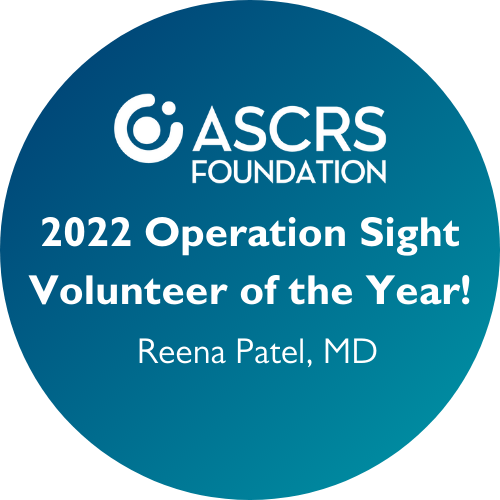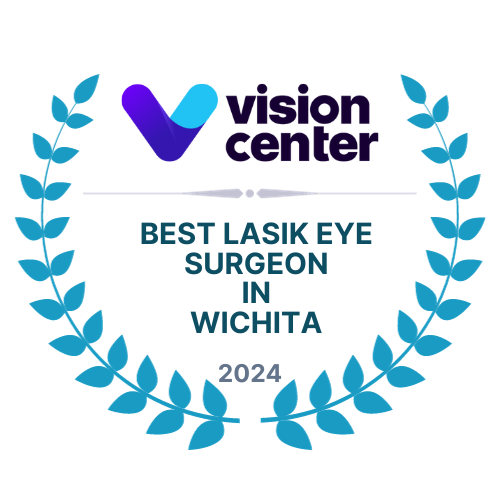
In Wichita’s windy climate, it is very common for many of us to experience dry eye symptoms like redness, itching, eye fatigue, blurred vision, excessive watering, burning and grittiness. Dry eye syndrome is frequently treated with eye drops, prescription eye drops, punctal plugs, and warm compresses. If you have moderate to severe dry eye syndrome and have tried these treatment options but received little relief, you may be a great candidate for the innovative LipiFlow treatment Thermal Pulsation System. Wichita Vision Institute was the first practice in Kansas to offer this groundbreaking treatment.
How Does LipiFlow® Work?

LipiFlow treatment is designed to treat the root cause of evaporative dry eye syndrome. Evaporative dry eye occurs when the outer lipid (oil) layer is deficient, which causes the water portion of the tear film to dry out quicker and evaporate at a more rapid rate. Evaporative dry eye can cause difficulties with reading, working on the computer, driving, watching television, and other common daily activities. LipiFlow® works by unblocking meibomian glands to restore lipid (oil) production needed for a healthy tear film layer.
The LipiFlow® treatment is a 12-minute, in-office treatment that applies heat and massage to your eyelids which helps loosen and release thickened oils from the meibomian glands in the eyelid. Opening and clearing these blocked glands allows the glands to resume natural production of lipids (oils) needed for a healthy tear film.
The Activator (eyepiece) of the LipiFlow® Thermal Pulsation System is a patented single-use applicator which uses precise heat applied to the inner eyelid with intermittent pressure to allow release of thickened oils so that the meibomian glands can resume natural lipid (oils) production. With its built-in sensors and unique design, the Activator ensures a safe, comfortable, sterile treatment.
In a clinical study, 79 percent of patients reported an improvement of their overall dry eye symptoms within four weeks, ranging from 10 to 100 percent improvement. Imagine living your life again without worrying about your eyes. LipiFlow® could be your first step to dry eye relief.
Am I a Candidate?
To determine if you suffer from evaporative dry eye and are a good candidate for LipiFlow®, schedule a dry eye consultation at Wichita Vision Institute. At the Accredited Dry Eye Center, Dr. Reena Patel and her knowledgeable staff will perform a comprehensive evaluation of your tear film, tear concentration, tear production, meibomian glands, blinking habits, lid position and tear ducts. During your exam, Dr. Patel may recommend that you have a LipiView® Ocular Surface Interferometry.
What Can I Expect after LipiFlow® Treatment?
There is no downtime or recovery period needed after the LipiFlow® treatment. Most patients are back to work and their normal activities very shortly after treatment. Many patients experience relief from dry eye symptoms within the first two weeks, but patients with severe dry eye may experience relief from their symptoms three months or longer after the treatment. Dr. Patel will prescribe a combination of treatment regimens for you to follow after LipiFlow® treatment. Remember that dry eye is a chronic disease and that LipiFlow® is not a cure for dry eye syndrome.
LipiFlow® FAQs & Dry Eye FAQs
What is dry eye?
Dry eye is a very common chronic medical condition that can affect your vision and health of your eye if left untreated. There are two types of dry eye syndrome: aqueous -deficient dry eye and evaporative dry eye. Aqueous-deficient dry eye occurs when there is a decrease in production of the water layer of your tear film. Evaporative dry eye occurs when there is a decrease in the oil layer of your tear film. During your dry eye evaluation, Dr. Patel may recommend performing a LipiView® analysis or a TearLab osmolarity test to identify the cause of your dry eye symptoms and make recommendations of the best treatment options for you.
Is dry eye syndrome common? What are possible causes?
Dry eye syndrome affects 100 million people throughout the world. It has been estimated that 40 million people in the United States suffer from dry eye syndrome. Dry eye symptoms can result from numerous factors, including age, medications, hormones, lifestyle, association with other diseases, etc.
Do I have dry eyes?
Dry eye patients may experience dryness, excessive watering or tearing, a feeling of foreign body in the eye (foreign body sensation), light sensitivity (photophobia), irritation, eye fatigue, burning, stinging, grittiness, blurred or fluctuating vision, itching, redness and/or discharge from the eyes. To determine if your symptoms are due to dry eyes and to learn more about the best treatment options for you, schedule a dry eye consultation with Dr. Patel. To learn more about dry eye please call us at 888-984-4393 (888-WVI-4EYE) or click here to schedule an appointment.
How do I find out if what I have is evaporative dry eye?
During your dry eye evaluation, Dr. Patel and her staff conduct a comprehensive spectrum of tests including LipiView® analysis which help determine whether you have evaporative dry eye and/or meibomian gland dysfunction.
What are meibomian glands, and why are they important?
Meibomian glands are at the base of the eyelids and produce oil for the tear film. Over time, these glands may become blocked and may not produce enough oil for a healthy tear film. If you do not have an adequate oil layer in your tears, your eyes can feel dry and irritated. Restoring oil flow can help improve dry eye symptoms.
I was diagnosed with dry eyes, but my eyes constantly water. Why?
Many of our patients are surprised to learn that their eyes are dry because they constantly water. It may seem like a contradiction, but excessive tearing is very common with dry eyes. When your brain senses that your eyes are dry, it sets off a reflex which causes your lacrimal glands to produce more tears to try to compensate for the dryness.
What is LipiView®?
The LipiView® system utilizes advanced imaging to precisely measure the lipid (oil) layer of your tears and the frequency and quality of your blinking by videotaping you blinking and analyzing more than 1 billion data points. This new technology can be essential to determining whether you have significant evaporative dry eye and whether you are a good candidate for LipiFlow® treatment. To schedule an appointment and/or to learn more about dry eye today, please call us at 888-984-4393 or click here to send an email.
How should I prepare for my LipiView® analysis and dry eye evaluation?
Here are some helpful guidelines for you to follow before your initial dry eye consultation and LipiView® analysis:
- Do not wear contact lenses to the visit.
- Do not use any artificial tears 24 hours prior to your visit.
- Do not use any eyelid creams or ointments 24 hours prior to your visit.
- Do not use Restasis 24 hours prior to your visit.
- Do not swim in a chlorinated pool for at least 12 hours prior to your visit.
- Do not rub your eyes vigorously 24 hours prior to your visit.
- Do not use oil-based facial cosmetics around the eye prior to your visit.
By following these guidelines, you will help ensure increased accuracy of LipiView® testing if it is performed during your dry eye evaluation.
I was diagnosed with dry eye syndrome. What treatment options do I have?
Wichita Vision Institute, an Accredited Dry Eye Center, offers a variety of treatment options for your dry eyes. Common treatment options include:
- Lubrication (artificial tears, gels, ointments)
- Punctal plugs
- Restasis/Cyclosporine
- LipiFlow®
- Lid hygiene & compresses
- Topical & /or oral antibiotics
- Oral supplements
What is LipiFlow®?
The LipiFlow® treatment is a 12-minute, in-office treatment that uses a single-use applicator which applies heat and massage to your eyelids, in turn helping to loosen and release thickened oils from the meibomian glands in the eyelid. Opening and clearing these blocked glands allows the glands to resume natural production of lipids (oils) needed for a healthy tear film. Patients with meibomian gland dysfunction and/or evaporative dry eye syndrome may greatly benefit from LipiFlow® treatment.
Will my eyes be affected during LipiFlow® treatment?
The Activator (eyepiece) of the LipiFlow® Thermal Pulsation System is a patented single-use applicator which uses precise heat applied to the inner eyelid with intermittent pressure to allow release of thickened oils so that the meibomian glands can resume natural lipid (oils) production. With its built-in sensors and unique design, the Activator protects the front surface of your eye (cornea) and ensures a safe, comfortable, sterile treatment.
Does LipiFlow® hurt?
Dr. Patel has had the LipiFlow® procedure and described it as a warm massage of the eyelids that was relaxing. She did not experience any pain or discomfort. In a clinical study, the average pain/discomfort score during LipiFlow® treatment on a scale of 1-10 was 1.4+ 1.4, which equates to awareness of heat and pressure without pain.
How long does LipiFlow® take?
Plan to be at the office for about an hour if you are having only the LipiFlow® treatment. If you are having additional testing, you may be at the office longer. The actual LipiFlow® treatment takes 12 minutes for both eyes.
Are LipiView® and LipiFlow® covered by insurance?
At this time, the LipiView® analysis and LipiFlow® treatment are not covered by insurance. We do notify your insurance company that you have had LipiView® testing and/or LipiFlow® treatment to help encourage them to cover these important new technologies, but there is currently no insurance coverage for these new technologies. We CAN, however, bill your dry eye evaluation to your medical insurance.
How long do the benefits from LipiFlow® treatment last?
Results can vary depending on the patient and the severity of their dry eye. It can take several weeks to months for symptom reduction/relief. A single LipiFlow® treatment can last up to 2-4 years depending on the patient. It is critical to understand that dry eye is a chronic condition and there is no permanent treatment for this disease. LipiFlow® is not a cure. LipiFlow® helps restore oil production to help improve dry eye symptoms and prevent progression of evaporative dry eye. Sustained relief from LipiFlow® involves numerous factors including your age, physiology, general health, number of years with evaporate dry eye syndrome, and amount of activities that exacerbate the problem (e.g., staring at a computer for an extended period of time). For some patients, repeated LipiFlow® treatments may be recommended or necessary.
Is there a permanent cure for dry eye syndrome?
Unfortunately, there is no permanent fix or cure for dry eye syndrome. Dry eye syndrome is a chronic disease, which can be managed and controlled with various treatment options. We are fortunate that technology has advanced in the last several years to offer new groundbreaking treatments for dry eye syndrome. Our Accredited Dry Eye Center offers a comprehensive range of testing and treatment options to fight dry eye symptoms.
What if I chose to ignore my evaporative dry eye problem?
Evaporative dry eye is a chronic disease. Without treatment, symptoms are likely to worsen and may include the following:
- Permanent loss of meibomian gland dysfunction
- Further ocular discomfort/irritation
- Visual degradation
Have there been clinical trials for LipiFlow®?
In a clinical study conducted, most patients (76%) who had the LipiFlow® treatment noted improvement of their dry eye symptoms within two weeks. In the study, patients treated with LipiFlow® showed improvement in oil secretion from meibomian glands and in the time tears remained on the eye before evaporating. Four weeks after LipiFlow® treatment, 79% of patients reported improvement in dry eye symptoms.
How much does LipiFlow® cost?
The cost to treat one eye with the LipiFlow® procedure is $800. To treat both eyes, the cost is $1,600. Insurance does not cover the LipiFlow® procedure.
Is LipiFlow® FDA-approved?
Yes, LipiFlow® is FDA-approved to treat evaporative dry eye.






